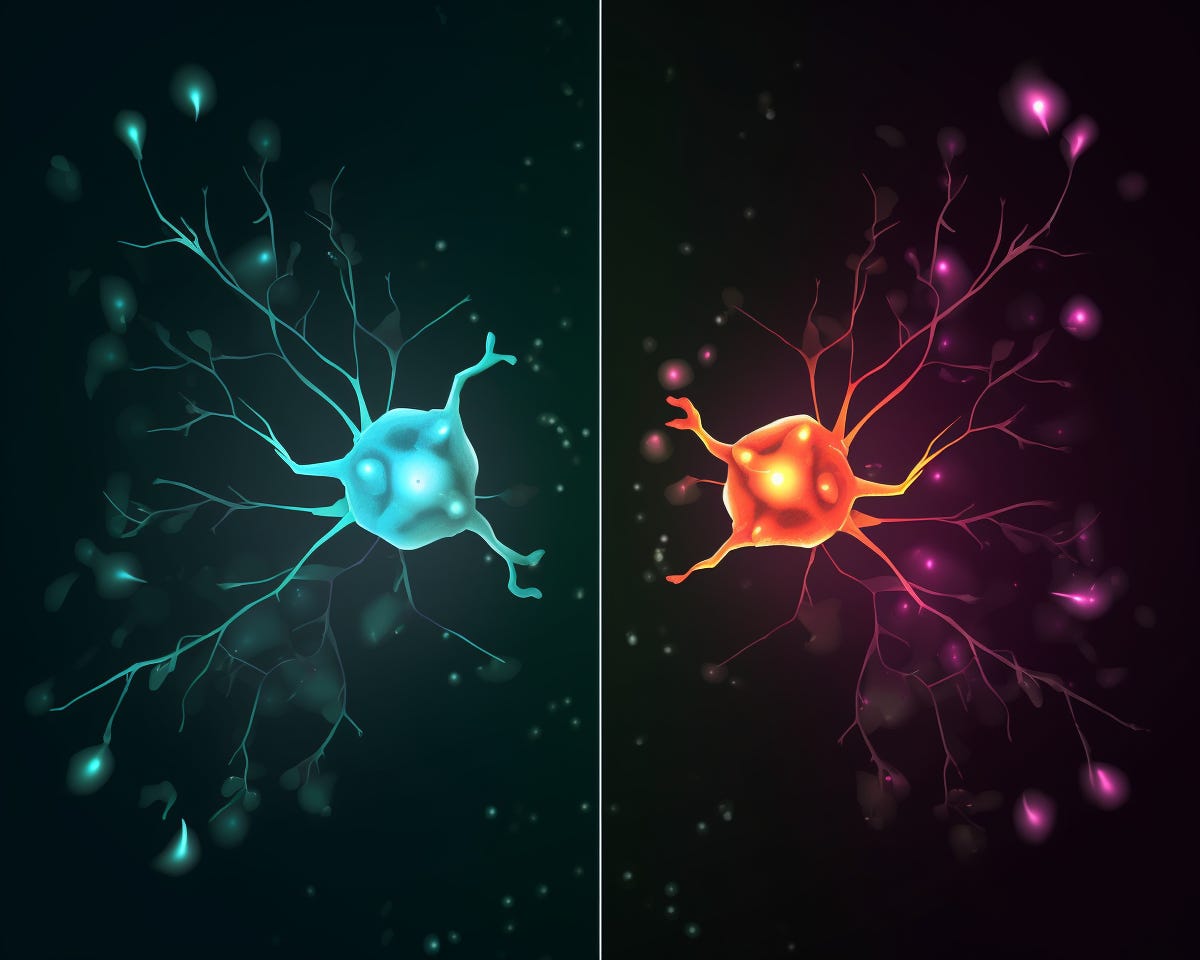Level 8: Brain Pong
Neurons enter the gaming arena
Welcome to The Gameful Scientist! This newsletter explores the intersection of scientific discovery and creativity. Enjoy!
In an exciting study, scientists taught living brain cells to play the classic arcade game Pong. Published in Neuron, the authors reveals the potential of "synthetic biological intelligence" and could change our understanding of learning, brain function, and even game design.
Researchers at Cortical Labs, a startup in Australia, used advanced chips with tiny electrodes to grow brain cells called cortical neurons from embryonic mice and human stem cells. They connected these chips to a computer running Pong, creating a "DishBrain" system that enabled the neurons to learn and improve their game performance in real-time. In this article, we’ll dive into the study and show how games can be used as a testbed for biological intelligence.
Welcome to Level 8.
Check out this video for context:
The DishBrain system allows neurons to form networks that exhibit spontaneous electrical activity, similar to how brain cells communicate inside our bodies. These networks connect with an electrode grid that sends and receives signals from the neurons. By showing the ball's position and distance in the Pong game, the researchers could control the paddle and manage gameplay.
Pong was chosen for this experiment due to its history as a popular testing ground in computational neuroscience, having even served as a basis for Google's DeepMind project. The game's real-time nature and clear losing conditions make it an ideal choice for showcasing the significance of the research.
Amazingly, the cells began "learning" and improved their performance within five minutes of gameplay. The more feedback the neurons received, the better they performed. Without feedback, the networks completely failed to learn how to play the game. This demonstrates the crucial role of feedback from the environment for proper brain development and learning, which may occur at the cellular level.
The study's researchers believe this learning mechanism is related to the free-energy principle, which suggests that the brain aims to minimize unpredictability or randomness in its environment. By changing their behavior to receive predictable signals, the neurons can reduce uncertainty and achieve stability. Interestingly, networks of human neurons outperformed those of mouse cells, consistent with previous research suggesting that human neurons have a greater ability to process information than those of rodents.
The DishBrain experiment offers a unique look at the connection between biology and gaming. The study shows that a simple layer of neurons can learn and adapt in real-time, opening up new opportunities for exploring how living things learn within simulated environments.
Brett Kagan, CSO of Cortical Labs and first-author of the paper, says:
Video games help people understand what’s going on. If we simply did it as a function of random numbers, people wouldn’t appreciate or understand the significance of the results.
The research highlights the potential of games as tools for better understanding complex biological processes. In the future, scientists could learn more about why human neurons are better at processing information than mouse cells and create simulations that mimic biological learning. Additionally, the DishBrain system might help with testing new drugs and improving machine learning algorithms.
The merging of biology and games reimagines both scientific discovery and the way we play. By using games as a testbed for biological intelligence, we may unlock new insights into how our brains work, adapt, and learn, while also enriching the gaming world with new possibilities and experiences.
See you next week :)
Thanks for reading The Gameful Scientist! I’d love to hear your thoughts below.
Feel free to contact me here or chat with me on Twitter @ATrotmanGrant :)



